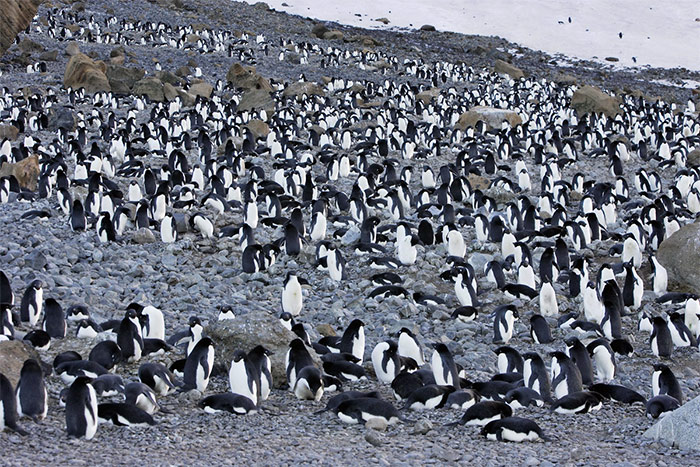Adelie Penguin population in east Antarctica double previous estimate
Almost six million Adelie Penguins are living in East Antarctica, more than double the number previously thought, scientists have announced, in findings that have implications for conservation.

Research by an Australian, French and Japanese team used aerial and ground surveys, tagging and resighting data and automated camera images over several breeding seasons, which allowed them to come up with the new figure.
They focused on a 5,000 kilometre (3,100 mile) stretch of coastline, estimating it was home to 5.9 million birds - some 3.6 million more than previously thought. On this basis, they estimate a likely global population of 14 to 16 million.
Before, population estimates only took into account breeding pairs, said Australian Antarctic Division seabird ecologist Louise Emmerson.
"Non-breeding birds are harder to count because they are out foraging at sea, rather than nesting in colonies on land," she said.
"However, our study in East Antarctica has shown that non-breeding Adelie Penguins may be as, or more, abundant than the breeders.
"These birds are an important reservoir of future breeders and estimating their numbers ensures we better understand the entire population's foraging needs."
Adelie Penguins, slick and efficient swimmers, live on the Antarctic continent and on many small, surrounding coastal islands. They spend the winter offshore in the seas surrounding the pack ice.
Seabird ecologist Colin Southwell said the research had implications for conservation, with more birds potentially interacting with humans in Antarctica and the Southern Ocean than previously thought.
He said the rocky, ice-free areas preferred by penguins for nesting were also favoured by research stations due to ease of resupply.
"There are currently nine permanently occupied research stations in the ice-free areas of East Antarctica and we found over one million birds breed within 10 kilometres of a station," he said.
"By identifying significant penguin breeding populations near stations we can better identify which areas may need enhanced protection into the future."
The study also estimated the amount of krill and fish needed to support the Adelie Penguin population, prey that is also sought after by seals and whales.
"An estimated 193,500 tonnes of krill and 18,800 tonnes of fish are eaten during the breeding season by Adelie Penguins breeding in East Antarctica," Emmerson said.
This information will now be used by the Commission for the Conservation of Antarctic Marine Living Resources to set sustainable krill fishery catch limits.
15 March 2017
Share this story




